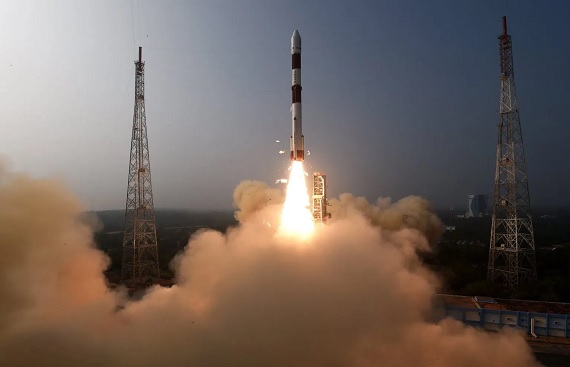ISRO Launches X-Ray Polarimeter Satellite Successfully
By
siliconindia | Tuesday, 02 January 2024, 02:12:19 PM IST

The Indian Space Research Organisation (ISRO) has achieved a successful launch of its first X-Ray Polarimeter Satellite, providing valuable insights into celestial objects such as black holes. The reliable Polar Satellite Launch Vehicle (PSLV) was utilized in the C58 mission, placing the primary X-Ray Polarimeter satellite XPoSat into its intended 650 km Low Earth Orbit. The launch took place at the scheduled time of 9:10 am from the first launch pad in Sriharikota.
As the 25-hour countdown concluded, the 44.4-meter-tall rocket lifted off majestically with thunderous applause from spectators who had descended here in large numbers at this spaceport situated about 135 km east of Chennai. The X-ray Polarimeter Satellite (XPoSat) is aimed to investigate the polarisation of intense X-ray sources in space.
ISRO has announced that the recently launched X-Ray Polarimeter Satellite marks the space agency's inaugural dedicated scientific satellite for conducting research in the realm of space-based polarization measurements of X-ray emissions from celestial sources. The study of X-ray polarization plays a pivotal role as a diagnostic tool, enabling the examination of both the radiation mechanism and geometry of celestial sources.
XPoSat's main payload is POLIX (Polarimeter Instrument in X-Rays), crafted by the Raman Research Institute, with the purpose of measuring polarimetry parameters. Additionally, XSPECT (X-ray Spectroscopy and Timing), developed by the U R Rao Satellite Centre in Bengaluru, is part of the satellite's instrumentation. The mission is expected to have a lifespan of approximately five years.
ISRO will also launch the state-of-the-art joint venture satellite with NASA — NISAR — in the first quarter of 2024. Built at a cost of $1.5 billion (nearly Rs 12,500 crore), NISAR (NASA-ISRO Synthetic Aperture Radar) is targeted for launch onboard India's GSLV rocket. Data from NISAR will be highly suitable for studying the land ecosystems, deformation of solid earth, mountain and polar cryosphere, sea ice, and coastal oceans on a regional to global scale.
Read More News :



.jpg)